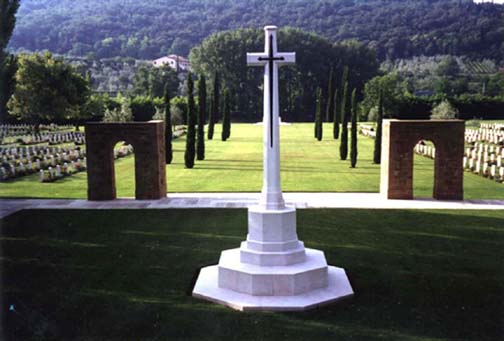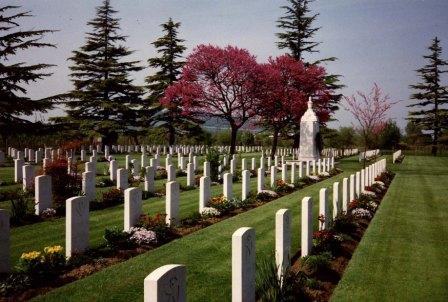The forces of British India played a major role in both World Wars. Nearly 1,700,000 men and women of the Commonwealth including some 160,000 from the forces of undivided British India died in the 1914-18 and 1939-45 Wars. In the first World War, the strength of the British Indian Army rose to one million and in the 2nd World War with two and half million. During WW-1, it fought in China, France and Belgium ( Flanders ), Mesopotamia against Turkey, Iraq, Iran, Egypt , Palestine, Gallipoli and in East Africa. In 2nd WW, a company of the Royal Indian Army Service Corps was part of the British Expeditionary Force in 1940 campaign which ended in the evacuation from Dunkirk ( France ). Divisions of British Indian Army fought in the Western Desert, in the Middle East, in Eritrea, Ethiopia, they fought in Italy and took part in the liberation of Greece. But against Japan in the east, British Indian Army played its greatest role right through from the reverses of 1942 to the final overwhelming victory of 1945.
"In the last two world wars 83,005 turban wearing Sikh soldiers were killed and 109,045 were wounded. They all died or were wounded for the freedom of Britain and the world, and during shell fire, with no other protection but the turban, the symbol of their faith."
(General Sir Frank Messervy K. C. S.I, K. B. E., C. B., D. S. O.)
"The Sikh Regiment in the Second World War"
Colonel F T Birdwood OBE
Published in Great Britain by Jarrold and Sons Ltd., Norwich
Foreword by General Sir Frank Messervy K. C. S.I, K. B. E., C. B., D. S. O.
Most of the People in Punjab does not know that their forefathers, the Sikhs have fought gallantry in Europe including Italy in the 2nd World War and played an important role for the liberation of Europe and paid heavy price for the freedom of mankind along with Allied forces as part of the forces of the Commonwealth. The total Allied casualties killed, wounded and missing were 312,000; of these, 42,000 of the killed belonged to the forces of the Commonwealth in Italy. Gurkhas, Sikhs and Muslims, the traditional warriors has a great history in Italy during that terrible and painful period of war.
It is interesting to note that in Italy, Sikhs are living in large number( about 90,000 ) next to England in Europe and have established more than a dozen Gurudwara's there.
Remembering Sikh Soldiers in Italy
|
Bhupinder Singh Holland has complied a list of Sikh soldiers who died in Europe during the Great War and are buried at various cemeteries in Italy. Remembering and honoring the fallen is the greatest tribute we can give to all those who gave their lives for our tomorrow.
|
In Memory of Naik AMAR SINGH
11053, 2nd Bn., 11th Sikh Regiment
who died age 30
on 13 September 1944
Son of Prem Singh and Punjab Kaur; husband of Gurdial Kaur
of Jhanir, Sardulgarh, Patiala, India.
Remembered with honour
CASSINO MEMORIAL
Commemorated in perpetuity by
the Commonwealth War Graves Commission
(From one of the graves)
|
| Online Memorial. Click to enter. |
The Cassino Memorial is situated within Cassino War Cemetery, which lies in the Commune of Cassino, Province of Frosinone, 139 kilometres south-east of Rome. Above it, at a distance of 1 kilometre, is the dominating hill on which stands the Abbey of Monte Cassino. Take the autostrada A1 from Rome to Naples and leave it at the Cassino exit. At the junction of this exit and the road into Cassino, is the first of 6 clearly visible signposts to the cemetery and Memorial.
Historical Information
On 3 September 1943 the Allies invaded the Italian mainland, the invasion coinciding with an armistice made with the Italians who then re-entered the war on the Allied side. Progress through southern Italy was rapid despite stiff resistance, but by the end of October, the Allies were facing the German winter defensive position known as the Gustav Line, which stretched from the river Garigliano in the west to the Sangro in the east. Initial attempts to breach the western end of the line were unsuccessful. Operations in January 1944 landed troops behind the German lines at Anzio, but defences were well organised, and a breakthrough was not actually achieved until 18 May, when Cassino was finally taken.
The site for CASSINO WAR CEMETERY was originally selected in January 1944, but the development of the battle during the first five months of that year made it impossible to use it until after the Germans had withdrawn from Cassino. During these early months of 1944, Cassino saw some of the fiercest fighting of the Italian campaign, the town itself and the dominating Monastery Hill proving the most stubborn obstacles encountered in the advance towards Rome. The majority of those buried in the war cemetery died in the battles during these months. There are now 4,266 Commonwealth servicemen of the Second World War buried or commemorated at Cassino War Cemetery. 284 of the burials are unidentified. Within the cemetery stands the CASSINO MEMORIAL which commemorates over 4,000 Commonwealth servicemen who took part in the Italian campaign and whose graves are not known.
Source: Commonwealth War Graves Commission |
|
|
Florence War Cemetery
|
Cassino Memorial, Forli Cremation Memorial, Sangro River Cremation Memorial has graves of Sikh soldiers of the 11th Sikh Regiment, 1st Punjab Regiment, 2nd Punjab Regiment, Nabha Akal Infantry, 16th Punjab Regiment, 8th Punjab Regiment,15th Punjab Regiment, 12th. Frontier Force Regiment, 6th Duke of Connaught's Own Lancers (Watson's Horse ), 13th. Frontier Force Rifles, King George V's Own Bengal Sappers and Miners, 13 Indian Mule Coy, 17th Indian Inf. Bde. Sig. Sec etc, and inscribed on these graves are the words ik onkar siri waheguru ji ke fateh, sanskare gaye in Gurmukhi. Ancona War Cemetery, Arezzo War Cemetery, and Rimini Gurkha war Cemetery are full with Gurkha's soldiers and a shalok from the Bhagwad Gita is written. Similarly Bari War Cemetery, Florence War Cemetery, Forli Indian Army War Cemetery, and Ravenna War Cemetery have Muslim soldiers, mostly from united Punjab, buried with inscriptions from the Qu’ran.
|
|
|
|



The Indian war memorial in Forli, Italy is so impressive. I had the honor to visit the place in June 2019.
ReplyDelete